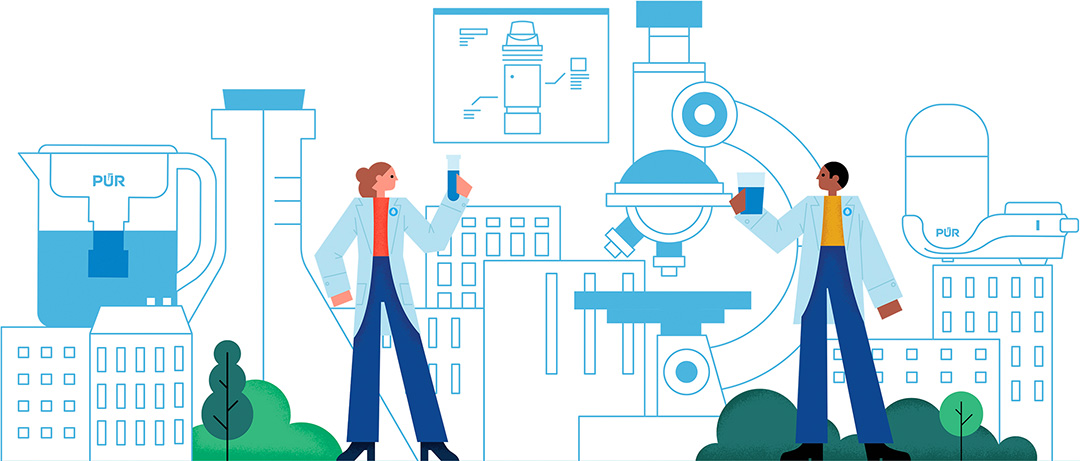Municipal Water Contamination Challenges
Navigating LCRR/LCRI Compliance
The information provided on this website is sourced from the United States Environmental Protection Agency (EPA). Our company is not affiliated with, endorsed by, or in any way officially connected with the EPA. While we strive to ensure the information is accurate and up to date, we recommend visiting the official EPA website for the most current and comprehensive information.

Changing legislation around water quality makes the job of providing cleaner water for communities even more complex.
Municipalities must be responsive and adaptable to new government guidelines and meet the mandates imposed by federal and state regulations. Below is an overview of the legislation around water quality.
For more information & details please visit
Lead and Copper Rule Overview
The Lead and Copper Rule (LCR) is the National Primary Drinking Water Regulation first promulgated in 1991 that requires actions by public water systems to reduce levels of Lead and copper in drinking water.
There have been multiple Short Term & Minor revisions and two major revisions to the law.
The two major revisions are:
- Lead & Copper Rule Revision (LCRR) passed in 2021
- Lead & Copper Rule Improvements (LCRI) passed in Oct 2024

Lead and Copper Rule Revision Overview
On January 15, 2021, the EPA promulgated the Lead and Copper Rule Revisions (LCRR), and the deadline for water systems to comply with these revised requirements is October 16, 2024.
Under the LCRR, it’s estimated that about 40% of large water systems may have to conduct line replacements.
LCRR requires water systems to:
- Monitor Lead and copper levels at resident’s taps and testing of the 5 liter better representing Lead Service Line (LSL) location (these requirements have been updated in the LCRI – passed Oct 2024)
- Create a comprehensive data base of Lead service lines in use
- Requires large systems that trigger the 15 ppb limit to replace minimum of 3% LSL per year. (these requirements have been updated in the LCRI – passed Oct 2024)
- Test water in schools
- Requires during LSL replacement that each property be given Point of Use (POU) systems certified for Lead and Six months of replacement filters.
Lead Service Line Inventory compliance requirements:
- Having all CWSs and NTNCWSs develop an inventory of service lines that meets the LCRR requirements, including service line materials classification, information sources, and public accessibility
- Water systems must submit their initial inventories to their state by October 16, 2024
- All CWSs and NTNCWSs must notify all persons served by the water system at the service connection with a Lead, GRR, or Lead status unknown service line within 30 days of completing their service line inventory
- All LCRR requirements other than the initial inventory requirements are subject to change under the LCRI.
Deadlines for compliance:
Water systems must submit an initial inventory or demonstrate the absence of LSLs by October 16, 2024.
They must also submit updated inventories to the primacy agencies annually or triennially based on Lead tap sampling frequency, but not more frequently than annually.
Water systems that have demonstrated the absence of LSLs by October 16, 2024, are not required to provide an update. However, if these systems subsequently find any LSL or galvanized requiring a replacement service line, they have 30 days to notify the state and prepare an updated inventory on a schedule established by the state.

Lead and Copper Rule Improvement Overview
On October 8, 2024, EPA announced the final Lead and Copper Rule Improvements (LCRI). The LCRI strengthens nationwide requirements to help protect against Lead in drinking water.
Key Provisions Include:
Achieving 100% Lead Pipe Replacement within 10 years
with additional time established for a limited number of drinking water systems.
Support of ongoing efforts to locate existing Lead pipes.
All water systems are required to regularly update their inventories and create a publicly available Lead service line replacement plan.
Lowers the threshold for taking action,
known as the Lead action level, from 15 µg/L to 10 µg/L.
Strengthening Protections to Reduce Exposure.
Water systems with multiple exceedances of the Lead action level are required to continue adjusting treatment, conduct additional community outreach, and ensure filters that are certified to reduce lead are made available to all consumers in the community.
Communicating transparently and frequently
with respect to Lead pipes and plan for replacement. The Consumer Confidence Reports must include clear health language about the dangers of Lead.
Improving Tap Sampling.
For sites with Lead service lines, water systems are required to collect and analyze the first-liter and fifth-liter of water samples and use the higher of the two values when determining compliance with the rule.
